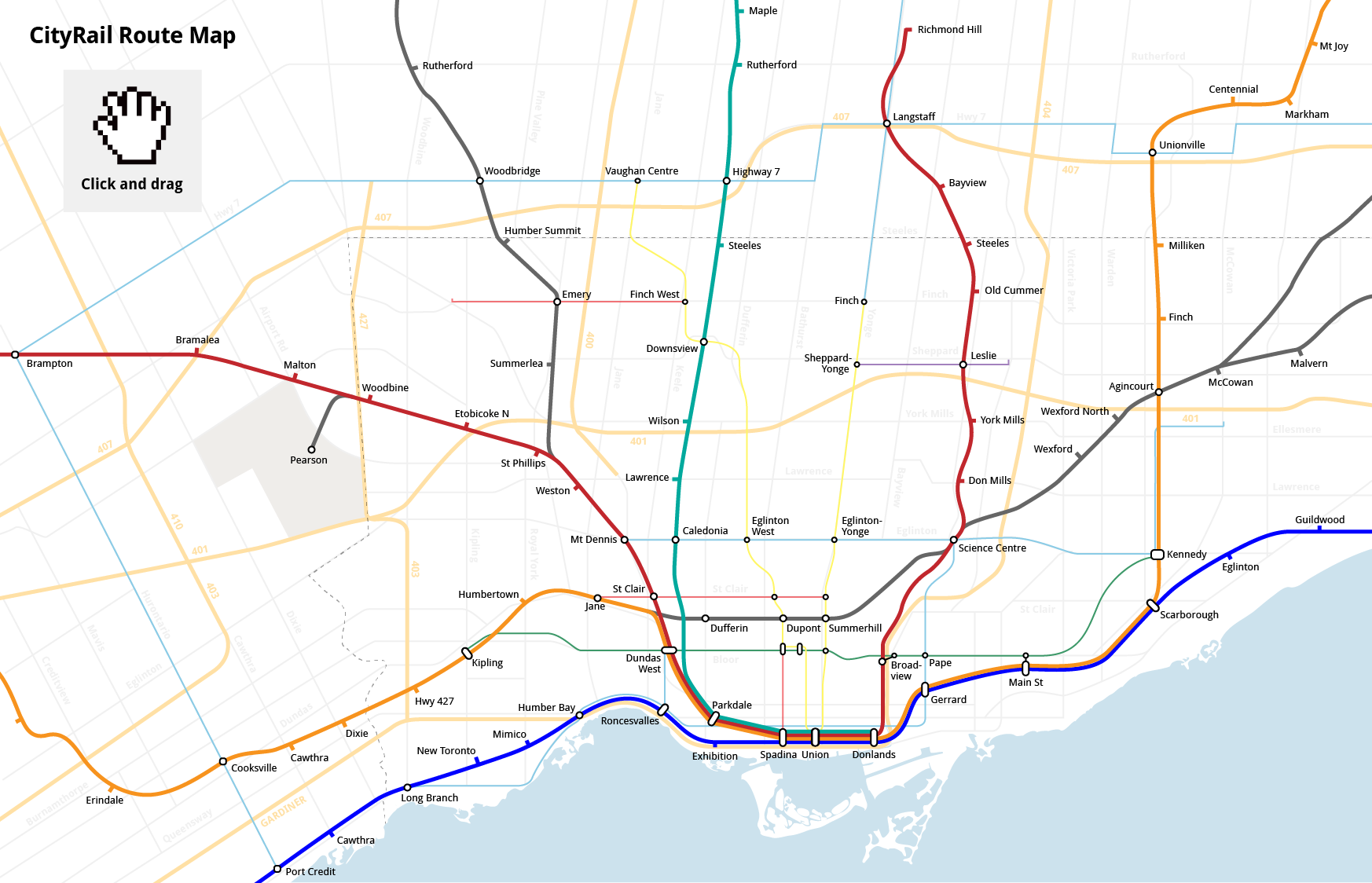CityRail
Scroll down!
Road congestion is a major problem for Toronto.
Toronto's average commute time is longer than cities several times its size.
-
Toronto
80 min
-
London
74 min
-
New York
69 min
-
Los Angeles
56 min
Transportation is the largest source of air pollution in Toronto.
-
Transportation
35%
-
Commercial
28%
-
Residential
25%
-
Industrial
12%
Every year, traffic causes:
440
premature deaths
1700
hospitalizations
1200
acute bronchitis
attacks in children
In 2006, congestion cost the Greater Toronto Area economy
$6 billion
By 2031, this cost will increase to
$15 billion
Rail transit is the best solution to Toronto’s congestion problem.
Rail generates the least emissions.
-
Small car
0.129
-
Bus
0.089
-
Diesel Rail
0.089
kg of CO2 per passenger-km
Rail takes up the least space.
One GO Transit bilevel coach can seat 162 passengers.
Toronto autos average 1.13 passengers during rush hour.
One bilevel coach can carry the equivalent of about 140 cars.
GO Transit, Toronto’s commuter rail system, has been very successful.
GO trains carry
175 000
riders every day. That's
48 million
riders every year.
80%
of GO riders choose the train over their car. It would take
four
new Gardiners and DVPs to handle GO’s passengers.
But GO’s service is limited.
96% of trips start or end at Union Station.
Only two lines have all day service.
Stations are far apart and local transit isn't well connected,
so most people drive.
Rail corridors run through most of the GTA.
It’s time for us to make use of this incredible resource.
CityRail
Frequent Service
Good Connections
Frequent Stations
Frequent Service
Trains every fifteen minutes or better mean
you can head to the station anytime,
without worrying about timetables.
Connections
Well-timed local transit connections mean
you're never left waiting at the station.
Frequent Stations
GO train stations average 6km apart.
Most people are too far to walk, bike, or take transit.
Fast accelerating electric trains mean more frequent stops without slowing down the line.
These infill stations mean more people can use sustainable transport.
Local transit connections extend this range even further.


CityRail concept by Jonathan English.
Read about it in greater detail on his blog:
Part 1,
Part 2,
Part 3.